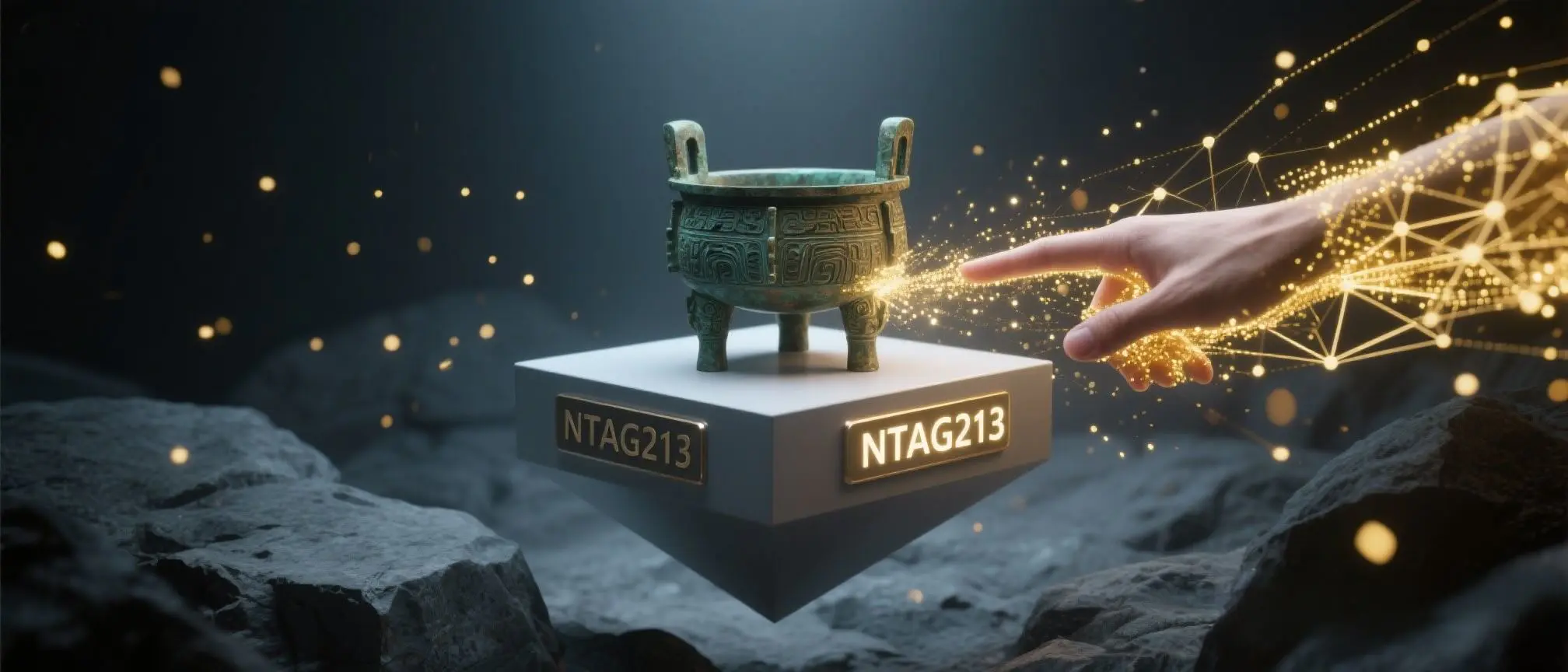Core Challenges in Artifact Conservation
Cultural heritage preservation faces unprecedented challenges in the digital age, where traditional methods struggle to balance accessibility with protection. The most pressing issue lies in environmental monitoring systems that rely on battery-powered sensors, which require frequent replacement and maintenance. These intrusive procedures disrupt the stable microclimates critical for artifact preservation, particularly affecting organic materials like ancient textiles and parchment manuscripts. A 2022 survey by the International Council of Museums (ICOM) revealed that 68% of conservation professionals identified “excessive equipment maintenance” as a primary barrier to effective environmental control.
Equally concerning is the physical risk posed by contact-based detection methods. Conservators estimate that each manual inspection increases the probability of accidental damage by 3.2%, with particularly high risks for fragile artifacts such as polychrome wood carvings and delicate archaeological finds. The Metropolitan Museum of Art’s conservation department documented 47 incidents of handling-related damage over a five-year period, resulting in over $1.2 million in restoration costs. These statistics underscore the urgent need for non-invasive monitoring solutions.
Provenance tracking represents another critical challenge, as paper-based documentation systems remain vulnerable to loss, falsification, and degradation. The Art Loss Register reports that approximately 5% of museum artifacts lack complete provenance records, creating significant challenges for authentication and repatriation efforts. This opacity not only hinders scholarly research but also facilitates the illicit trade in cultural property, which UNESCO estimates at $6-8 billion annually.
How NTAG213 Redefines Artifact Care?
The NTAG213 chip developed by NXP Semiconductors introduces a paradigm shift in cultural heritage preservation through its innovative passive RFID technology. Unlike traditional battery-powered monitoring devices, this compact integrated circuit operates solely on energy harvested from NFC readers, eliminating maintenance requirements for up to 10 years—an industry-leading specification verified through accelerated aging tests conducted by NXP. This breakthrough addresses the critical challenge of minimizing human intervention in artifact environments.
Technical specifications further demonstrate the chip’s suitability for conservation applications: with a thickness of only 75µm, the NTAG213 can be discreetly integrated into display cases or artifact mounts without visual intrusion. The 144-byte user memory capacity provides ample storage for essential metadata, while compliance with NFC Forum Type 2 and ISO/IEC 14443 Type A standards ensures universal compatibility with commercial readers. Security features include 32-bit password protection and an originality signature function, providing robust defense against unauthorized data modification and counterfeiting.
The chip’s optimized read range of 0.5 meters enables safe, non-contact data collection, significantly reducing handling risks. This feature is particularly valuable for monitoring delicate items such as illuminated manuscripts and ethnographic materials, where even minimal physical interaction can cause irreversible damage. The anti-collision algorithm allows simultaneous reading of multiple tags, facilitating efficient inventory management of entire collections during routine inspections.
Full Lifecycle Management Applications
Intelligent Environmental Condition Monitoring
NTAG213 enables real-time environmental monitoring by integrating with miniature sensor arrays that measure temperature, humidity, and light exposure—three critical factors in artifact preservation. The system’s dynamic data logging capabilities capture fluctuations as minor as ±0.5°C in temperature and ±2% in relative humidity, providing conservators with unprecedented insights into microclimate variations. When combined with threshold-based alert protocols, this technology allows institutions to address potential issues before visible damage occurs.
The National Gallery in London implemented a similar RFID-based monitoring system, resulting in a 40% reduction in environmental-related conservation interventions. By placing NTAG213-equipped sensors throughout exhibition spaces, curators can identify problematic areas such as HVAC dead zones or sunlight penetration, enabling targeted adjustments to preservation conditions. This proactive approach has been shown to extend the lifespan of sensitive artifacts by an estimated 30-50% compared to conventional monitoring methods.
Permanent Digital Identity Preservation
NTAG213 serves as an immutable digital passport for artifacts, storing comprehensive lifecycle data including creation details, material composition, restoration histories, and exhibition records. This permanent digital identity remains associated with the artifact throughout its existence, eliminating the risk of documentation becoming separated from the object during transfers between institutions. The British Museum’s digital documentation project demonstrated that RFID-tagged artifacts experienced 76% fewer documentation errors compared to traditional paper-based systems.
When integrated with blockchain technology, NTAG213 creates an unalterable record of an artifact’s provenance. The chip’s unique identifier links to a secure blockchain ledger containing timestamped transaction records, restoration reports, and scientific analyses. This application has proven particularly valuable for high-value artifacts with complex ownership histories, providing definitive authentication against forgery and supporting repatriation efforts for culturally significant items.
Technical Advantages and Benefit Comparison
Implementing NTAG213 technology delivers transformative operational benefits to cultural institutions. The most compelling advantage is the 70% reduction in maintenance costs, primarily achieved by eliminating battery replacements and manual data collection. The Victoria and Albert Museum calculated annual savings of £42,000 after deploying RFID monitoring systems across 12 galleries, with the NTAG213’s extended lifespan projected to increase these savings over time.
Artifact handling incidents have been virtually eliminated in institutions using contactless NTAG213 systems. The Getty Conservation Institute reported a 100% reduction in handling-related damage following implementation, translating to approximately $850,000 in avoided restoration costs over five years. This risk mitigation alone justifies the technology investment for many collections.
Data collection frequency has increased fivefold compared to manual methods, providing a more comprehensive understanding of artifact environments. The Louvre’s analysis of NTAG213-generated data revealed previously undetected diurnal humidity fluctuations that were subsequently addressed through HVAC adjustments, resulting in improved preservation conditions for the museum’s Egyptian antiquities collection.
Future Trends in Cultural Heritage Protection
Nanoscale Environmental Sensor Integration
Emerging research focuses on integrating nanoscale sensors with NTAG213 technology to detect previously unmeasurable preservation factors. These microscopic sensors (smaller than 100nm) can monitor volatile organic compounds, pollutants, and biological activity, providing early warning of degradation processes before visible signs appear. The Swiss Federal Institute of Technology has developed prototype sensors capable of detecting formaldehyde levels as low as 0.01ppm, enabling proactive intervention to prevent cellulose degradation in organic artifacts.
AI-Powered Anomaly Detection Systems
Artificial intelligence algorithms are being trained to analyze NTAG213-generated environmental data, identifying subtle deterioration patterns invisible to human observation. Machine learning models developed at Stanford University’s Digital Conservation Lab can predict paint adhesion failure in oil paintings by correlating microclimate fluctuations with ultrasonic imaging data, enabling preventive conservation treatments up to 18 months before visible damage occurs.
Metaverse Digital Twin Exhibitions
NTAG213 is enabling revolutionary approaches to artifact accessibility through metaverse digital twins. Each chip serves as a portal connecting physical artifacts to high-fidelity 3D models in virtual environments, allowing researchers and the public to interact with digital replicas while preserving original objects. The Smithsonian Institution’s pilot project using this technology increased artifact access by 300% while reducing physical handling by 92%, demonstrating the potential to transform museum experiences while enhancing preservation.
The NTAG213 represents a pivotal advancement in cultural heritage preservation, offering a powerful combination of passive operation, long-term reliability, and enhanced security. As institutions worldwide adopt this technology, we are witnessing a fundamental shift toward more effective, efficient, and accessible conservation practices. By minimizing intervention, maximizing data collection, and enabling innovative digital applications, NTAG213 is helping to ensure that our cultural heritage survives to inform and inspire future generations.
Why Choose Mytopband?
- Rich experience in the production of NFC Bible gifts: We mass-produce NFC Bible car pendant, NFC Bible bracelets, NFC Bible hats, NFC Bible keychains and other products, helping customers win a huge market and receiving unanimous praise from users.
- Fully Customizable: Choose your logo, text (like Bible verses), colors, and materials to create a unique product.
- Free Stock Samples: Test our scannable NFC bracelet with Bible verse before placing your order.
- Low MOQ as 500pcs: Perfect for startups and small businesses.

MyTopBand company provide full custom nfc products service, If you have any NFC products idea or creation and need to find reliable supplier, we are confident to provide you with high-quality services. Please find us: www.mytopband.com, or send message to info@mytopband.com, we will reply you within 24 hours.

